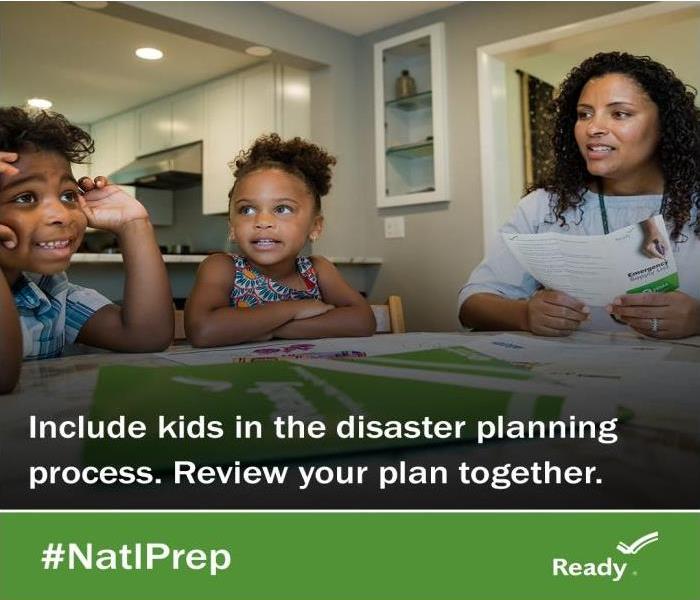National Preparedness Month Week 3: Teach Your Youth to Prepare for Disasters Sept 15-21
9/16/2019 (Permalink)
 It's important to teach kids about disasters preparedness. Make it fun, have them help put together an emergency kit. "Be Prepared Not Scared".
It's important to teach kids about disasters preparedness. Make it fun, have them help put together an emergency kit. "Be Prepared Not Scared".
The phrase "The better you're prepared, the less you're scared" goes for kids as well as adults.
When talking to kids about disasters, it is important to teach them about disasters, without scaring them. It's a balancing act between the facts and potential impacts of a disaster and empowering them with actions they can take to be safe. Being open about what you are doing as a family to prepare before disasters happens is comforting. When possible, involve kids in activities like putting together the disaster supplies kit.
The best thing you can do for younger children is to create a safe environment around them. You can't really teach an infant or toddler about Drop Cover and Hold in an earthquake, but you can reduce the likelihood they will get hurt from falling book shelves, pictures and other furnishings around them. For more information on reducing earthquake hazards in your home visit our Prepare your Home page
As kids get older
For most kids, you can start introducing safety actions at about 4-years-old. Don't overwhelm them with too much information at once. Teach one safety action such as Drop, Cover and Hold, and follow up with actually doing it so they can demonstrate they understand. Practice with them until you are satisfied they know what to do. As kids get older, you can talk about how a disaster is something that could hurt people or cause damage. Explain that nature sometimes provides "too much of a good thing" -- fire, rain, and wind. Explain how important it is to make a Family Disaster Plan. Teach children:
Be Prepared, Build a Kit
Being prepared for an emergency isn't just about staying safe during a disaster. It's about how to stay comfortable, clean, fed, and healthy afterwards – when a storm or disaster may have knocked out electricity.
If you lost power, how would you eat? The refrigerator can’t keep foods cold. The microwave can’t warm things up. You might not get clean water out of your faucets. How would you find out whether it was safe to play outside? Not from the TV or computer!
That’s why it’s important for families to work together to build an emergency kit before an emergency strikes. There should be enough food, water, clothing, and supplies to last for at least three days.
Here are some items you and your family will need:
Additional Emergency Supplies
Consider adding the following items to your emergency supply kit based on your individual needs:
Maintaining Your Kit
After assembling your kit remember to maintain it so it’s ready when needed:
Kit Storage Locations
Since you do not know where you will be when an emergency occurs, prepare supplies for home, work and vehicles.
SERVPRO of West Riverside city is local and available 24/7, keep our information in your emergency contact list. We are here to help!






 24/7 Emergency Service
24/7 Emergency Service